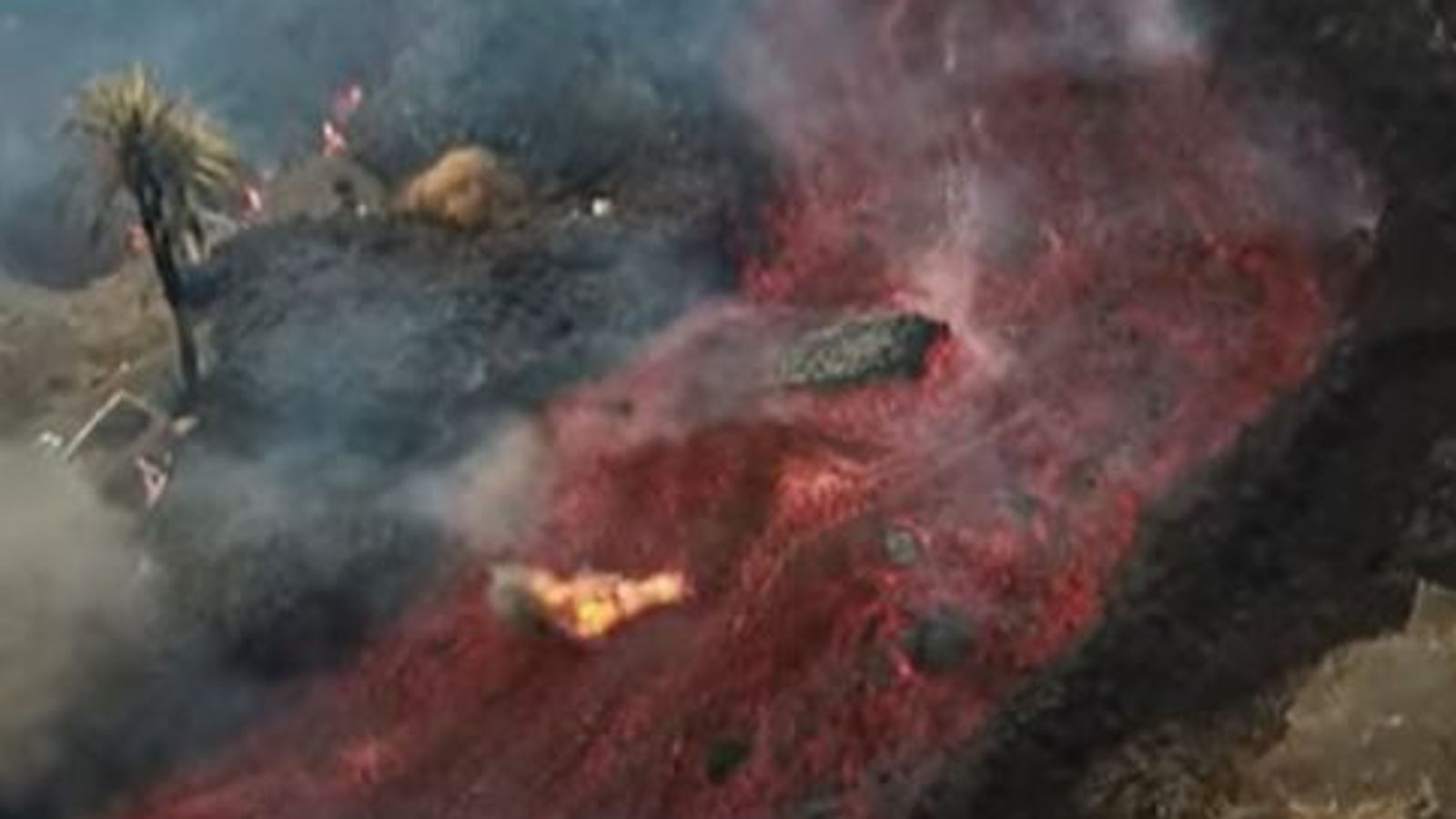Searing hot boulders the size of three-storey buildings have flowed down the side of a volcano in the Canary Islands as a string of tremors shook the ground three weeks after it erupted.
The accompanying river of scorching magma, reaching temperatures of up to 1,240C (2,264F), also destroyed the last few properties that remained standing in the village of Todoque on La Palma, according to scientists.
Some 21 tremors were also recorded on Sunday, the largest measuring 3.8, shaking the ground in the villages of Mazo, Fuencaliente and El Paso.
Please use Chrome browser for a more accessible video player
Explaining the latest activity, Spain’s National Security Department wrote on Twitter: “The collapse of the northern flank of the… volcano has caused the release of large blocks of material and the appearance of new flows that run through areas already evacuated.”
Lava flows have so far destroyed 1,186 buildings following the eruption on 19 September, said the Canary Islands Volcanic Institute.
It has also engulfed more than 1,200 acres (493 hectares) of land.
About 6,000 people have been evacuated from their homes on the island, which has around 83,000 inhabitants, who mainly earn their living from fruit farming and tourism.
La Palma eruption: Authorities urge calm as new river of lava threatens more destruction
La Palma volcano: TUI cancels flights to Canary Island until end of October after eruption turned ‘aggressive’
La Palma volcano: New earthquakes hit Spanish island as fresh lava surge comes amid crater collapse
Follow the Daily podcast on Apple Podcasts, Google Podcasts, Spotify, Spreaker
Lightning was seen near the eruption over the weekend.
A scientific study published in 2016 found this could be produced during volcanic eruptions because the collision of ash particles created an electrical charge.
La Palma, which is is around 22 miles (35km) long and 12 miles (20km) wide at its broadest point, is part of the volcanic Canary Islands, an archipelago off northwest Africa that is part of Spanish territory.






















